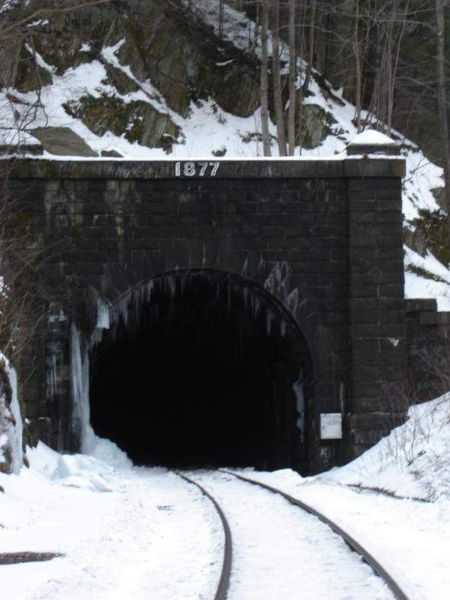When first proposed in 1819, the Hoosac Tunnel seemed so logical. It would provide an efficient and direct route for the Boston and Albany Railroad, whose pathway meandered 20 miles along precipitous grades. Early proponents, however, could not have imagined that blasting a 4.75 mile tunnel through the Hoosac Mountain would require over 20 years of labor. The project took so long to complete that it was commonly referred to as "The Great Bore."
Work began in the 1850s, but financial troubles put the project on hold. By 1863, the state legislature took over the tunnel, but political issues, tunneling accidents, and drilling obstacles plagued the process. By 1868, only one-third of the tunnel had been excavated, so legislators sought private contractors to complete the job. They awarded the work to two highly regarded Canadian civil engineers, Walter and Francis Shanley. They quickly reorganized the work and introduced several innovations that allowed them to finally complete the work and, at the same time, significantly transform hard-rock tunneling techniques.
Facts
- The Hoosac tunnelers developed several innovations that marked the transition to modern tunneling methods: 1) a more effective process for pushing the tunnel advance, called the "center-cut system;" 2) the use of mechanized drilling equipment; 3) the use of high-powered explosives that resulted from advances in the science of chemistry; and 4) the use of electricity to detonate blasting caps, which in turn set off the explosive charge.
- With the center-cut system of heading advance, workers drilled holes in a three-stage sequence, and they loaded and shot each set of holes before proceeding to the next. The first set of holes, the center-cut holes, was placed near the center of the heading and was angled inward, so that a V-shaped area opened when they were shot. Rock blasted loose from two subsequent sets of surrounding holes fell could move into the center hole.
- The Hoosac tunnelers were successful in blasting with nitroglycerine, an explosive ten times more powerful than the black powder used previously. They established procedures for simultaneous detonation using an electric battery, a concept that had not previously been considered.
- Engineers devised an innovative 1,000-foot elevator to hoist rock from the central access shaft.
- Hoosac tunnelers experimented with steam-powered mechanical drills before successfully adopting the newly invented compressed-air Burleigh drill, which greatly improved productivity of the workers and the rate at which the tunneling progressed.
- Hoosac Facts: Over half a million pounds of nitroglycerine were used. Over 20 million bricks were used as lining to support the tunnel. Nearly 200 lives were lost during the two decades of hazardous construction. One million tons of rocks were removed to create the tunnel.



